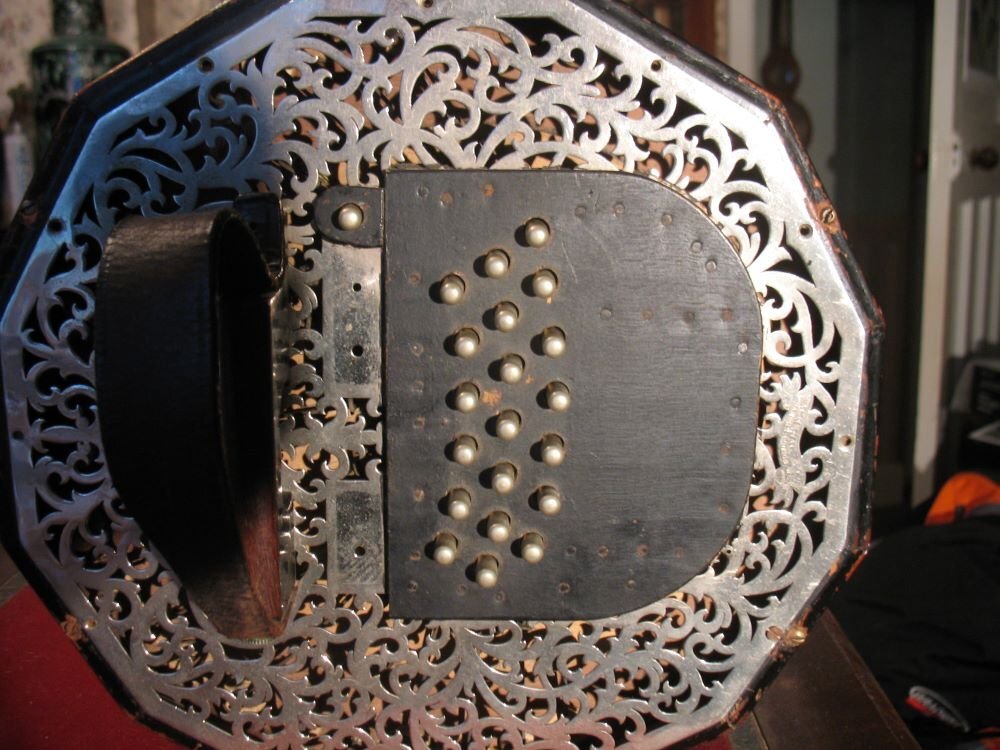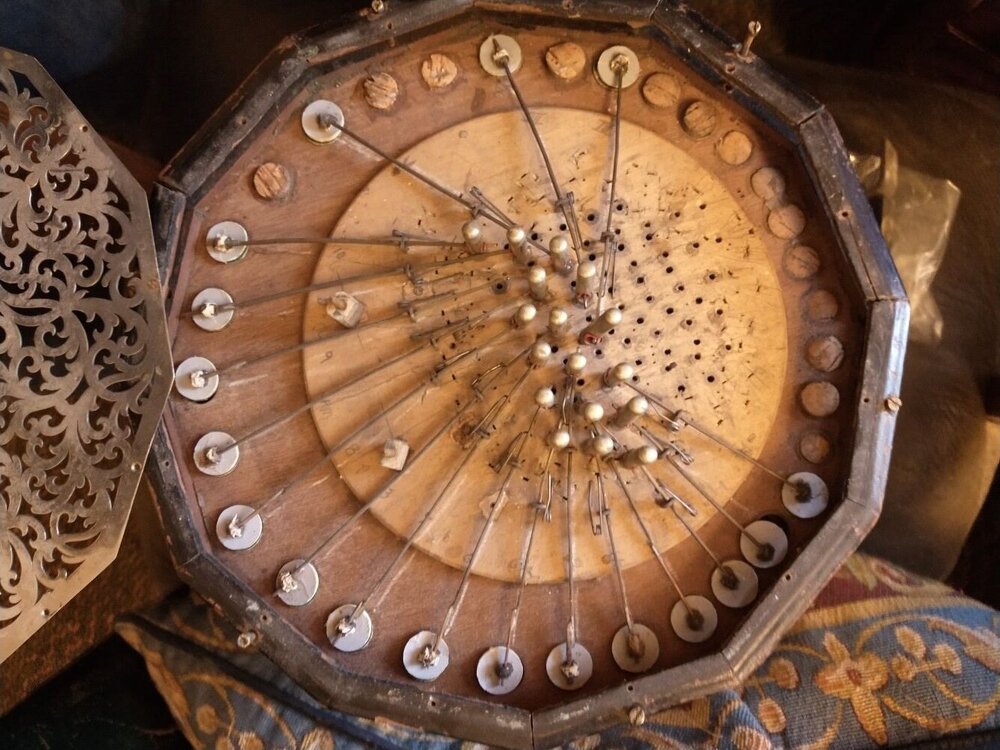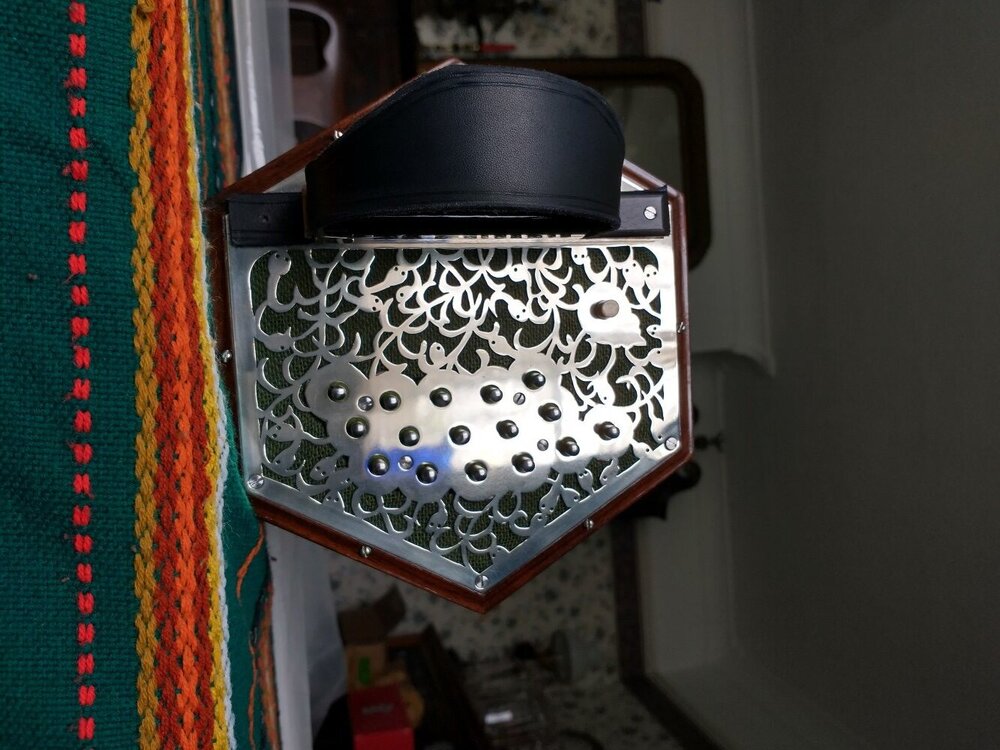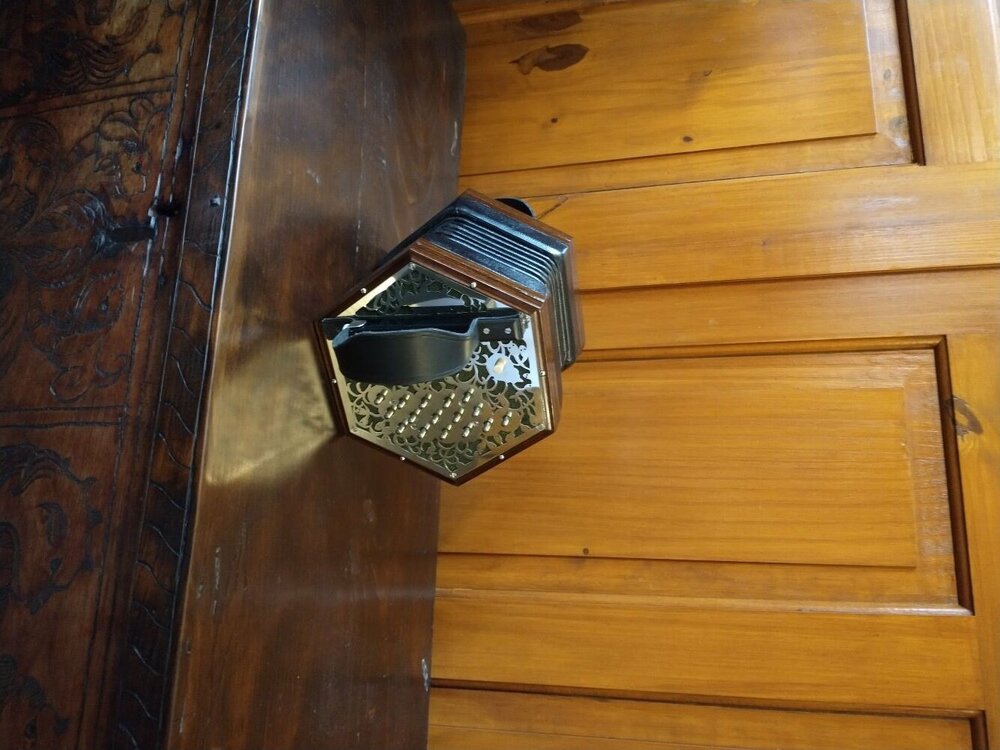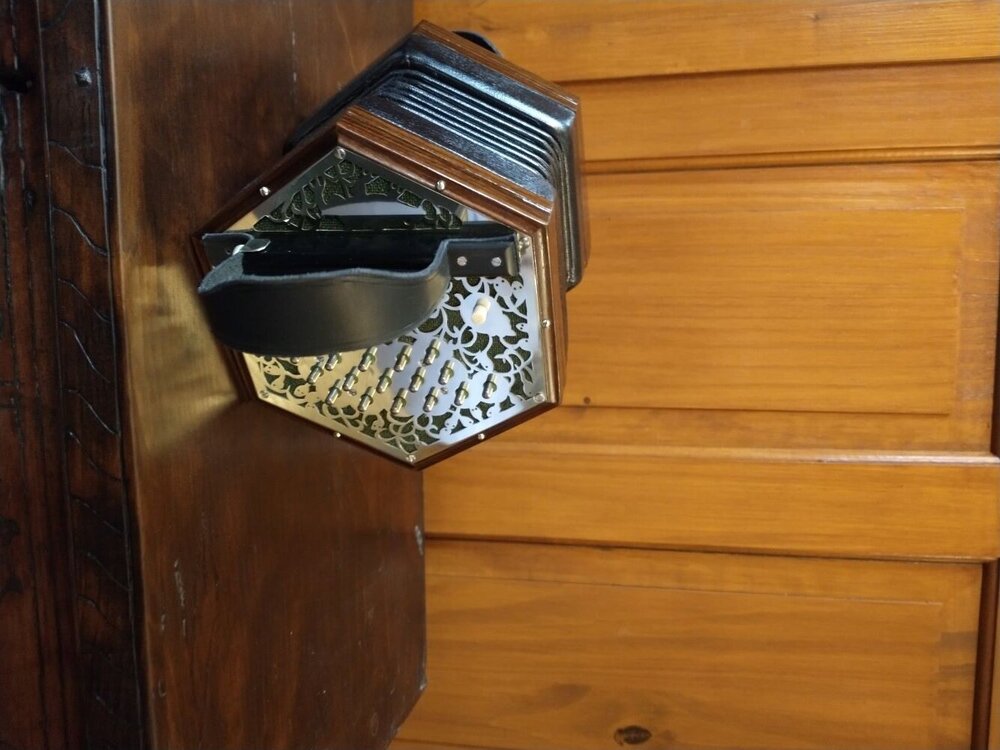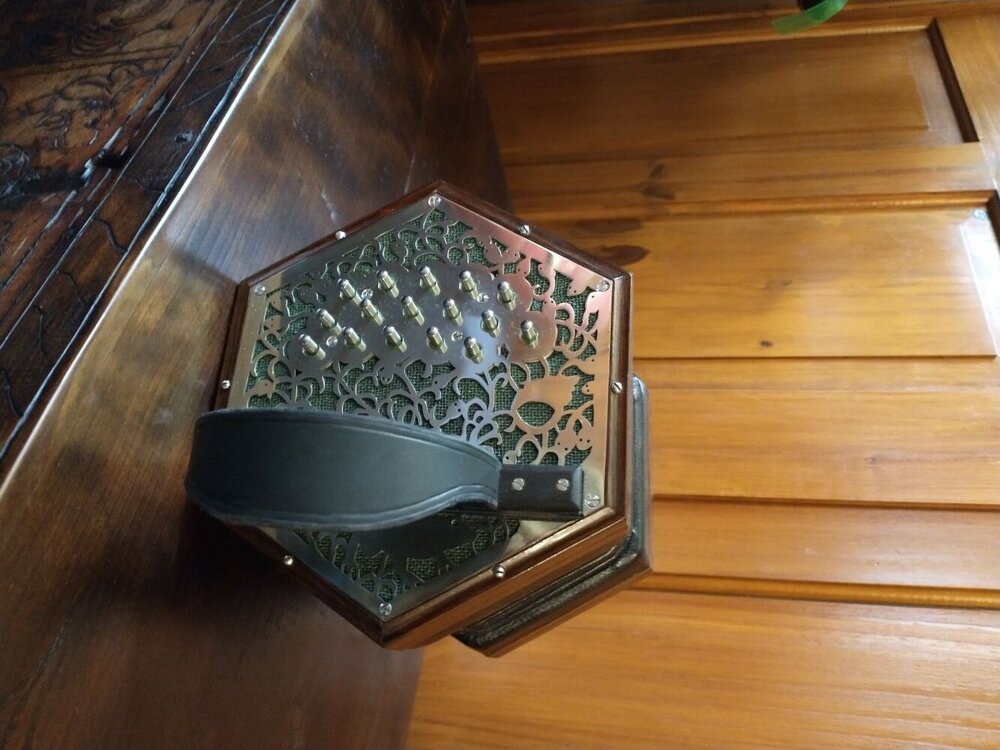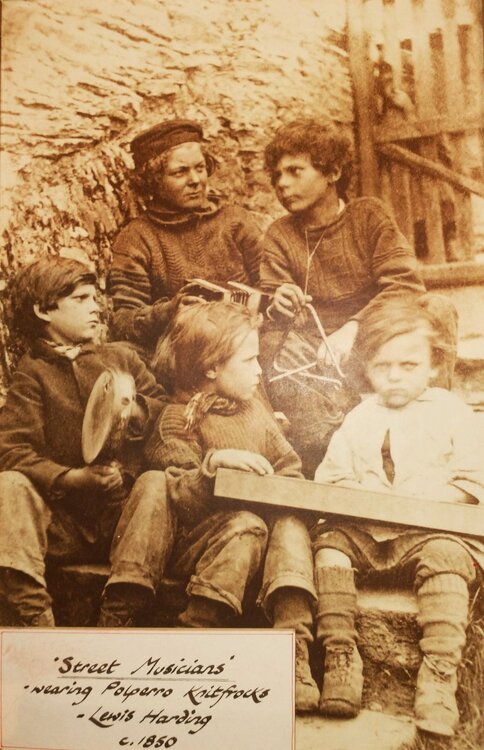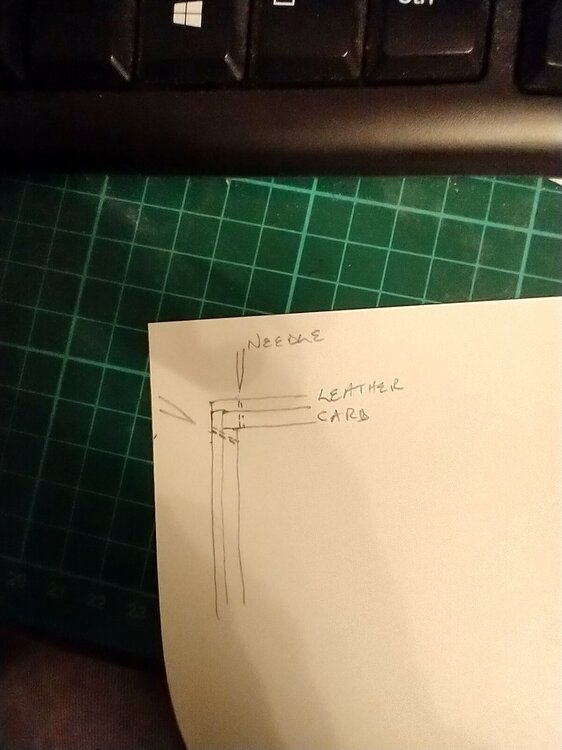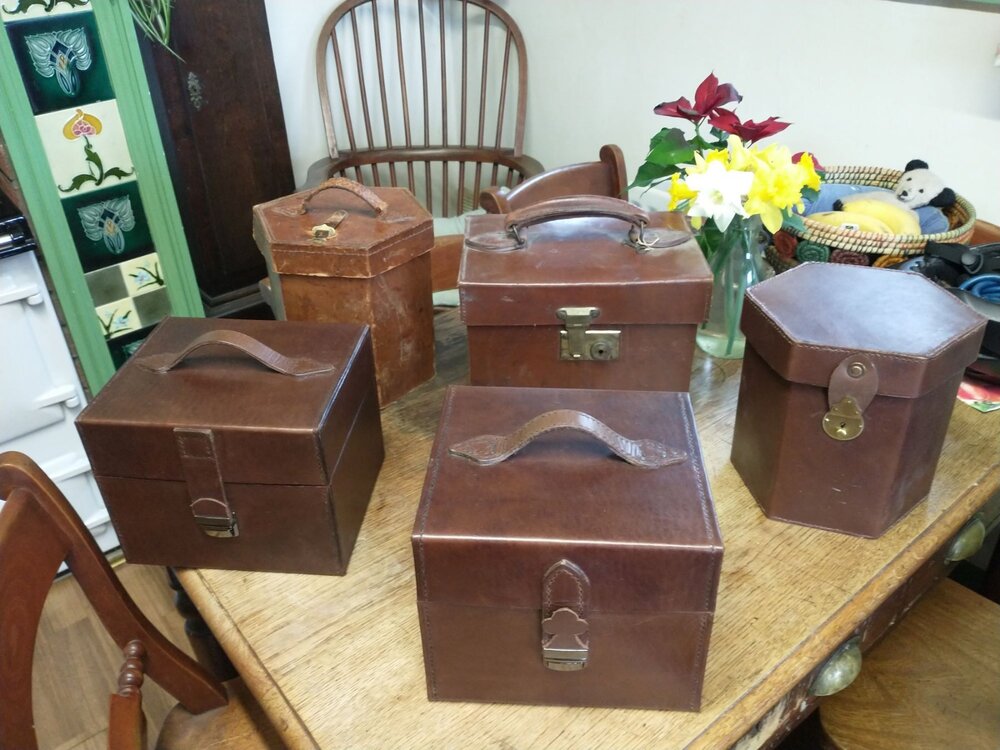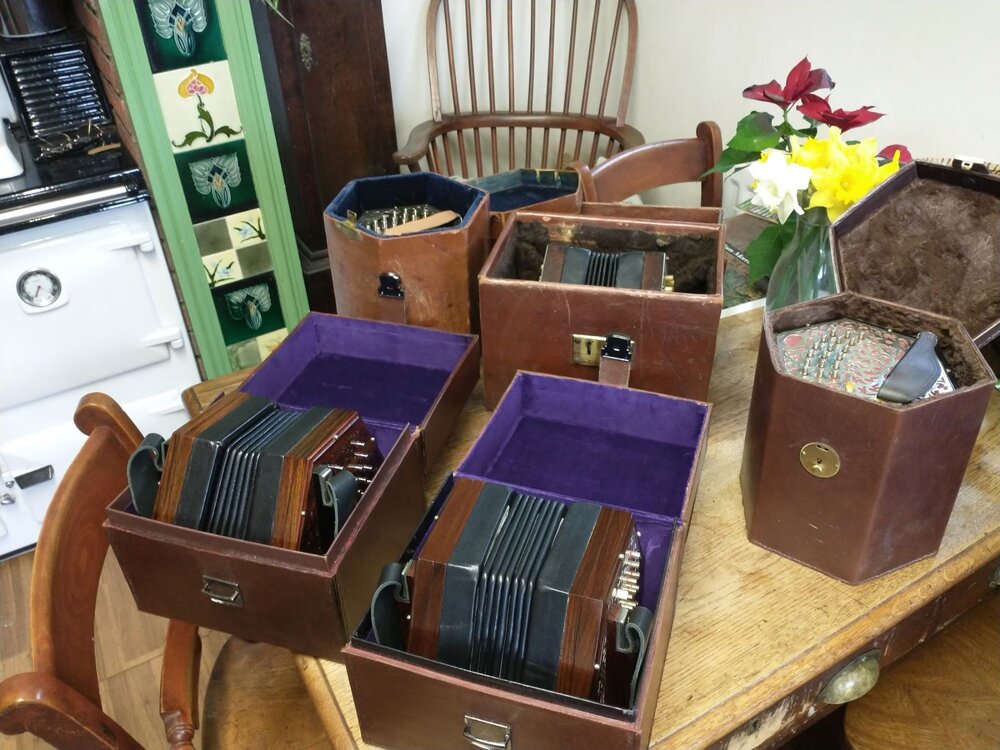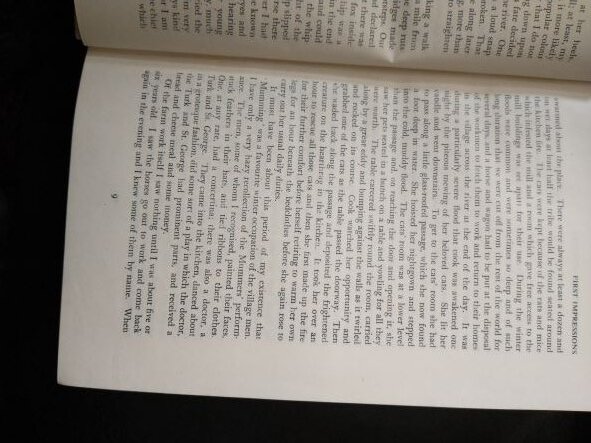-
Posts
207 -
Joined
Everything posted by DDF
-
A few more for anyone interested in these comparisons.Measured from the same points that Mike used. C Jeffries- metal ends- 31 bone buttons-Bb/F- 1890-73mm C Jeffries- metal ends- 31 metal buttons -C/G-1890 -74.7mm G Jones- Rosewood ends- 34 metal buttons -C/G-1890- 75.6mm Nickolds- metal ends -30 bone buttons-C/G- 1890 -75.5mm Wheatstone Linota- metal ends -36 metal buttons-C/G -1917 -73.8mm
-
Hello Roger, I don't have any pictures of the making of them but here's a few low res photos of them made. The chamber wall slots I cut on a lathe with a slitting saw and the dovetailed slots on a pin guided router table.The dovetails i made slightly undersize then fitted the reeds with a chisel as they varied somewhat in proportions.Regards David.
-
Hello Roger, The reed pan is a conventional style radial set up. The bellows card is archival quality rag board and the construction again is along traditional lines. I am happy to open it and take pictures of the reed pans if you still would like me to?Regards David.
-
There you go Richard. I leave that up for a few days as it was recorded on a cheap phone and my recording skills are only slightly worse than my musical skills! Regards David.
-
Thanks ,I made radial chambers the wood came from a locally felled sycamore tree.Good luck on your search, only go for one that was a good box to start with to save lots work ending in a disappointing result. regards David.
-
Thanks, I asked my grand children what they thought I should design in to the end and they came up with all sorts of ideas,elephants ,dinosaurs,tractors etc. Just post xmas I was out checking the state of the local frog spawn progress(it has been in rapid decline around here) and it occurred to me the button area on a concertina resembles a mass of spawn. so the design was born mother frog watching over her brood with a pond snail looking after my air button. I'm now glad I took a chance and bought that rough duet, although the reeds were the only usable parts in it.
-
The ends are fret sawn german silver.I'm afraid the photos are rather poor as it is dull and rainy here today and I took the with a phone.
-
Hello, A few years back I showed this awfully butchered large duet concertina.I hoped the reeds left in it would be reasonable quality and they appeared to be. I have finally got around to making them a new home. it was quite a challenge squeezing them in but I'm pretty happy with the resulting 32button D/G.Apart from a bit more tweeking it is starting to play /sound better than I was expecting.Sorry no idea why some of the pictures are rotated? regards David.
-
Hello Ross, Just a thought which I'm sure Greg or yourself will already be aware of? I had owned mine for decades and had it apart numerous times also it had been in to Andrew Norman for new bellows and light touch tuning. The previous owner had it lightly re fettled by Colin Dipper. Nobody ever could put a serial number to it though. A few years after receiving it back from Andrew I had a spring break.When I split the action enclosure to replace it I noticed (beneath a strongish light) a serial number, difficult to spot but just about readable. I have enclosed an image of the left hand(bass) end showing the impressed number. Might be worth a check on yours with a bright light or a uv lamp?Regards David.
-
Mine is a C/G but also has the bone thumb rest and a bone air button and I would say they are some of the best models.
-
The use of shellac as an adhesive
DDF replied to Famuswood's topic in Instrument Construction & Repair
I have used a thick shellac mix for valves and it seems to work fine I don't think it would be the best for "pad assembly" or pad attachment. -
-
In the past I have bought it from here. http://www.metalsmith.co.uk/metals-materials.htm regards David.
-
Its definitely worth having a go. That case in the left hand back I made in 1980 with no knowledge and very few tools.I made it from small leather suit case which belonged to my grandmother.It was bought for her when she left home as a young teenager in the 1920s,to work in service as a maid. I have used it almost daily but rather than patch it up decided it was time to replace it hence the new cases last winter.To be completely candid I made two because the first one turned out 3mm to small. You can line the case with whatever you like .The cardboard as Adrian said when laminated with hide glue makes a really stiff board to make the case. The soft lining is to protect the instrument from abrasion when pulled in and out over and over. regards David.
-
Hello Adrian, I think Alex's beautiful case is a wooden box with a leather covering whereas in the "traditional" type, the leather and card form the structure of the case. I have a lachenal square case where the stitching is so close to the edge that it goes through the corner edge at about 45°. I also have a Crabb square case which seems to be constructed more along the lines of technique I used. I had thought the square cases would be easier to make than the "jug" style but they not really. I should also say if anyone is worried about my handle position on the square cases and them accidentally falling open and spilling the contents rest assured I have tested that scenario. The concertina stays in the case.
-
If you do go for the wood lining you may need to drill the stitching holes as the stitching punch will likely damage the wood edges too much,just a thought.
-
These are a few I have made myself over the years the front two last winter. They have card lamination inside and are box stitched . I found a little superglue and activator works well to hold sections together whilst stitching.
-
Just looked at another of his videos and the thumbnail to it show where I imagine the noise is coming from. The buttons are un-bushed and look quite slack in the end board.
-
That one does sound like buttons without bushings.
-
Tricky to say without at the least links to the videos.Could be a fantastic instrument which has pads that have gone a bit hard could be a not so good instrument with no bushings in and around the buttons?
-
The second is "Tripping up the stairs" i think?
-
-
I have never found the dye in meths an issue with darker woods such as mahogany and rosewood etc but if the wood is pale, satinwood,birch etc I would use de waxed bleached shellac with clear alcohol. If anyone is interested the mixture we used to use to revive dirty tired french polish was equal parts linseed oil, meths and vinegar. shaken up to emulsify and rubbed on to the old polish with clean lint free cloths or a rubber then buffed of to remove the dirt and oil.
-
Another way of finishing is once you've built your layers and let them cure/harden is to then do the final gloss finish.This can be done by using the same" rubber" but only charging it with meths/alcohol, this thins the shellac remaining in the rubber until you are almost removing a little of the finished surface . You'll get a very gloss finish but it it is very easy for things to go awry so a lot of care is needed.









